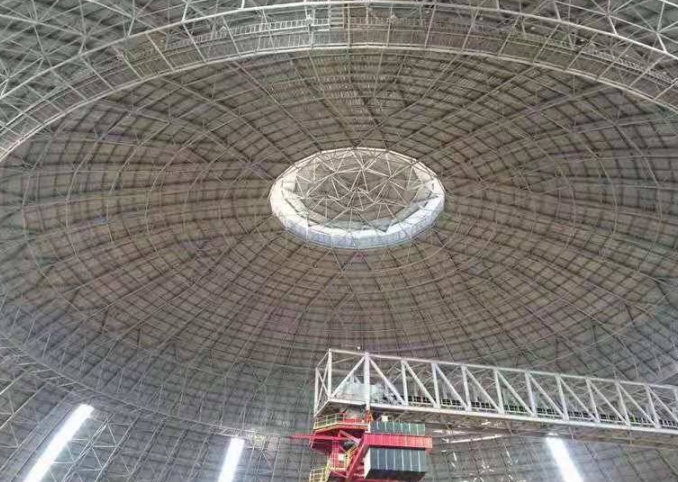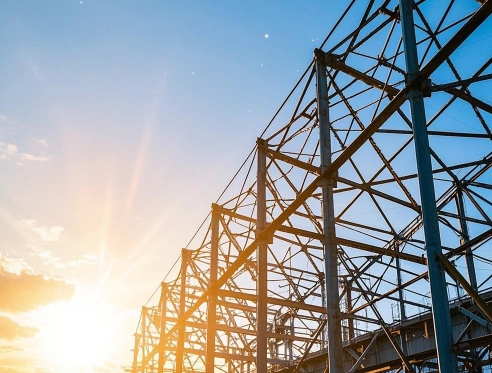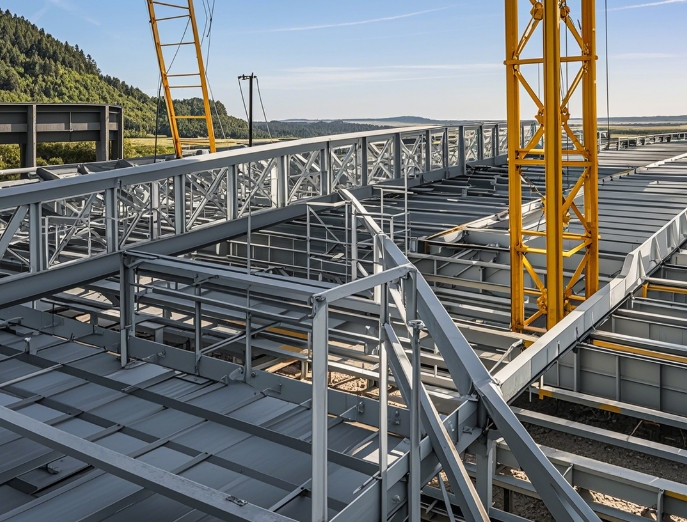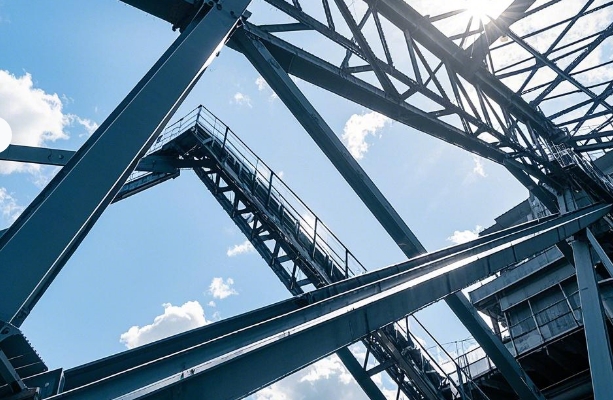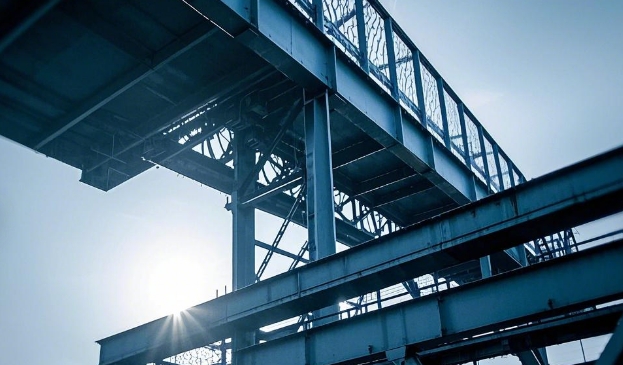Installation Specification for Steel Structure Grid Structure
更新时间:2025-02-20 15:39:38•点击:1654524 • Industry Views
In the field of modern construction engineering, grid steel structures are widely used in various large public buildings, industrial plants, and other projects due to their excellent strength, good spatial adaptability, and convenient construction characteristics. A set of scientific, standardized, and rigorous installation procedures is not only the cornerstone for ensuring the stable and safe operation of grid steel structures throughout their entire lifecycle, but also the core element for ensuring building quality and safe use.
Preparation before installation: Build a solid foundation for construction
The pre-treatment of the construction site is a prerequisite step for installation work. The construction team needs to conduct a comprehensive inspection of the site conditions to ensure that the site is flat, solid, and has sufficient bearing capacity to meet the needs of material stacking and equipment parking. By planning the site reasonably and setting up dedicated material storage areas and equipment parking areas, it is possible to effectively avoid chaos during the construction process and prevent construction delays or safety accidents caused by site issues.
Strict inspection of components is a key link in ensuring installation quality. Before the entry of components, it is necessary to carefully check the specifications, models, lengths of the members, as well as the appearance quality, dimensional accuracy, and welding quality of the nodes based on the design drawings. With the help of professional testing tools such as calipers, weld seam detectors, etc., each component is inspected one by one to ensure that there are no quality defects such as deformation, cracks, rust, etc. Only components that have passed inspection can be put into use on the construction site.
The technical briefing of construction personnel and the formulation of emergency plans cannot be ignored. Before construction, organize a detailed technical briefing for all participants to ensure they are familiar with the construction drawings and installation plans, and clarify the technical requirements and quality standards for each construction step. At the same time, based on the actual situation of the project, a comprehensive emergency plan should be developed in advance, and corresponding response measures should be formulated for possible adverse weather, equipment failures, sudden safety accidents, etc., to ensure the smooth progress of the construction process.
Installation process: precise construction according to the method
The high-altitude bulk method is suitable for grid projects with small spans and convenient transportation of loose parts. During installation, follow the construction sequence from one end to the other and from bottom to top. First, install the lower chord member and lower chord ball, build the foundation frame of the grid, and then install the belly member and upper chord ball in sequence. During the connection process of the rod, use a torque wrench to ensure that the bolt tightening torque meets the design requirements. When using welding technology, ensure that the weld seam is full, uniform, and free of defects such as virtual welding and missed welding.
The segmented or block installation method is commonly used for medium span truss structures. Divide the grid into several sections or blocks on the ground, pre assemble according to design requirements, and ensure the dimensional accuracy of each section or block through precise measurement and adjustment. Use a crane to lift the pre assembled units to the design position. During the splicing process, use positioning fixtures to ensure accurate positioning, and use high-strength bolts or welding connections to ensure a firm and reliable connection.
The overall lifting method is suitable for large-span and heavy grid structures. After completing the overall assembly of the grid on the ground, use multiple cranes or large lifting equipment to lift it to the design elevation at once. Before lifting, conduct comprehensive debugging and inspection of the lifting equipment to ensure that the performance parameters of each device meet the requirements. Through a synchronous control system, ensure that each device runs synchronously, so that the grid remains horizontal during the lifting process and avoids abnormal situations such as tilting and twisting.
Installation quality control: strictly adhere to the quality red line
During the installation process, real-time monitoring of the installation position and verticality of the rods is required. Using measuring instruments such as total stations and theodolites, regularly measure the position and verticality of the poles to ensure that deviations are controlled within the allowable range of design and specifications. For the connection quality of key nodes, non-destructive testing methods such as ultrasonic testing, magnetic particle testing, and torque wrench testing are used to ensure the reliability of the connection.
At the same time, establish a comprehensive measurement and monitoring system to monitor the deformation of the grid in real time. Multiple observation points are set up on the grid structure, and high-precision level gauges, total stations, and other measuring equipment are used to collect real-time data. Through data analysis, abnormal deformation of the grid structure is detected in a timely manner, and corresponding adjustment measures are taken to ensure the installation quality of the grid structure.
Acceptance process: Ensure quality meets standards
After the installation of the grid frame is completed, a comprehensive and detailed acceptance work needs to be carried out. Firstly, measure the overall dimensions of the grid structure, including span, height, grid size, etc., to ensure that it meets the design requirements. Check the appearance quality of the grid structure and inspect the surface of the members and nodes for any obvious defects or damage. Use a level to measure the deflection of the grid structure, compare the measurement results with the design values, and ensure that the deflection is within the allowable range.
Conduct sampling inspection on connecting nodes, select nodes according to a certain proportion, and check welding quality, bolt tightening, etc. For welding nodes, ultrasonic testing, radiographic testing and other methods are used for inspection; For bolted connection nodes, use a torque wrench for random inspection to ensure that the tightening torque of the bolts meets the design requirements. Only when all acceptance indicators meet the qualified standards, can the installation project of the steel truss structure be deemed to be successfully completed.
The installation regulations for steel truss structures are a systematic engineering process that is interrelated, rigorous, and orderly. From careful preparation before installation, to precise operation during the installation process, to strict quality control and final comprehensive acceptance, every link is closely related and indispensable. Only by strictly following these regulations can the installation quality of the grid steel structure be ensured, providing a solid guarantee for the safe use of the building.
笔记
Recommended Reading
-
Full analysis of seismic design and maintenance of grid structure
2025-02-27 16:16:52•1197791 次
-
What are the key process points to follow in order to ensure the quality of grid processing?
2025-02-27 11:21:00•115739 次
-
What type of construction is the grid mainly suitable for?
2025-02-25 16:42:00•111900 次
-
Quality control requirements of grid manufacturers!
2025-02-25 16:02:44•208070 次
